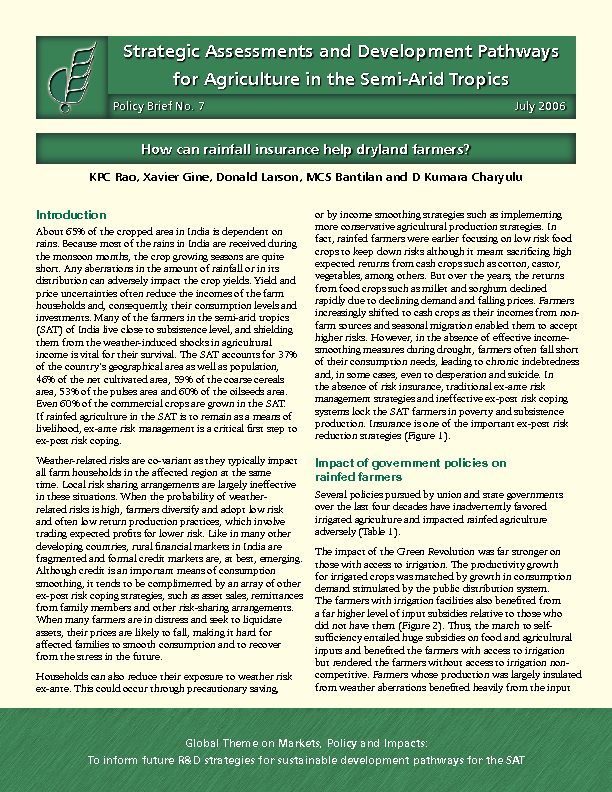How Can Rainfall Insurance help Dryland Farmers?

About 65% of the cropped area in India is dependent on rains. Because most of the rains in India are received during the monsoon months, the crop growing seasons are quite short. Any aberrations in the amount of rainfall or in its distribution can adversely impact the crop yields. Yield and price uncertainties often reduce the incomes of the farm households and, consequently, their consumption levels and investments. Many of the farmers in the semi-arid tropics (SAT) of India live close to subsistence level, and shielding them from the weather-induced shocks in agricultural income is vital for their survival. The SAT accounts for 37% of the country’s geographical area as well as population, 46% of the net cultivated area, 59% of the coarse cereals area, 53% of the pulses area and 60% of the oilseeds area. Even 60% of the commercial crops are grown in the SAT. If rainfed agriculture in the SAT is to remain as a means of livelihood, ex-ante risk management is a critical first step to ex-post risk coping.
